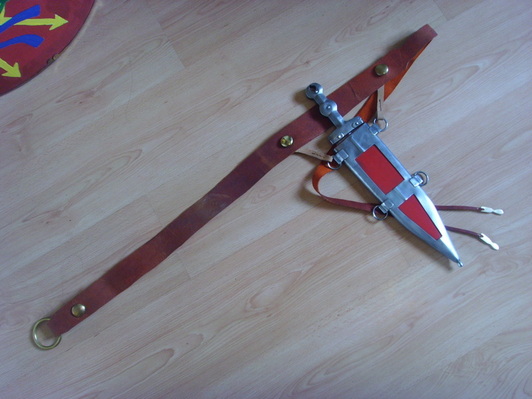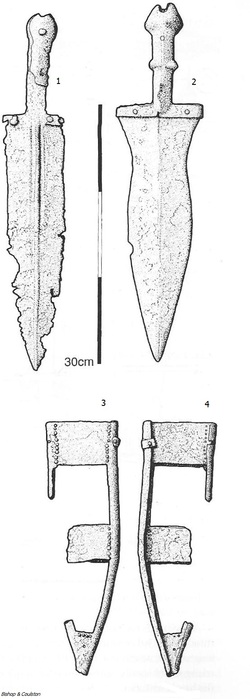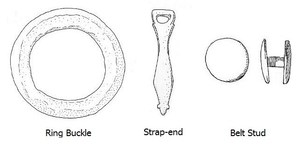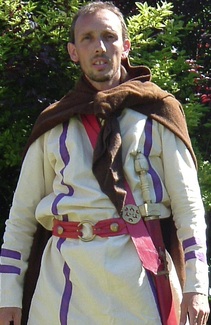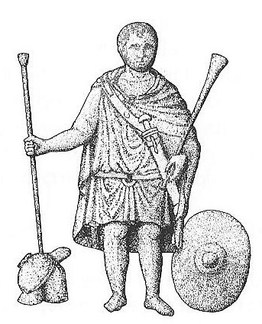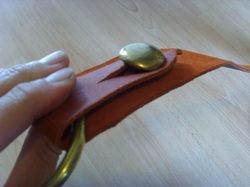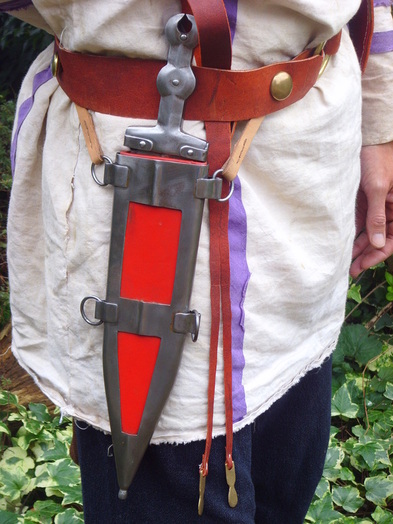DAGGER & BELT
|
Above you can see the new style of military belt that was introduced during the reign of emperor Septimus Severus. The buckle is a plain bronze ring, and in this case the two strap ends are fed through and the belt is secured on a domed stud through a slit in the leather. Its an extremely simple fastening that looks slick. The dagger is attached to the belt in the same way, although there are no depictions of soldiers wearing their daggers that have survived. The two bronze strap ends are plain and unadorned, others may be decorated. They always come in pairs and are designed to jingle when the legionary walks anywhere. This military belt is impressive and tells civillians that Fortunatus is a legionary, even when he is out of armour, walking the streets of Lauricium off-duty. He is allowed to carry his dagger off duty, again this acts as a badge of military status.
Left. Two daggers found at Künzing, west of Lauricium, with their iron framed scabbards, below them.
Above. Bronze belt parts found at Dura-Europus, Syria (3rdC). They include the central ring, a strap-end that dangles at the end of the belt leather, and one of the mushroom shaped studs used to fasten the belt together.
|
|
Right. A demonstration of how the double-headed mushroom stud works, a slit in the leather is pushed over the stud. This is an ingenious and elegant way of fastening the 3rd century military belt. Fortunatus also uses studs to hang his dagger from the belt. This is speculation, no daggers are shown on gravestones, so we don't know whether they were hung from the belt or on a shoulder strap (baldric, like the sword). Below A close-up of the dagger and the way it uses bronze studs to fasten to the belt. Note the end of the strap looped up over the belt, with its bronze terminals dangling down against the thigh. |
